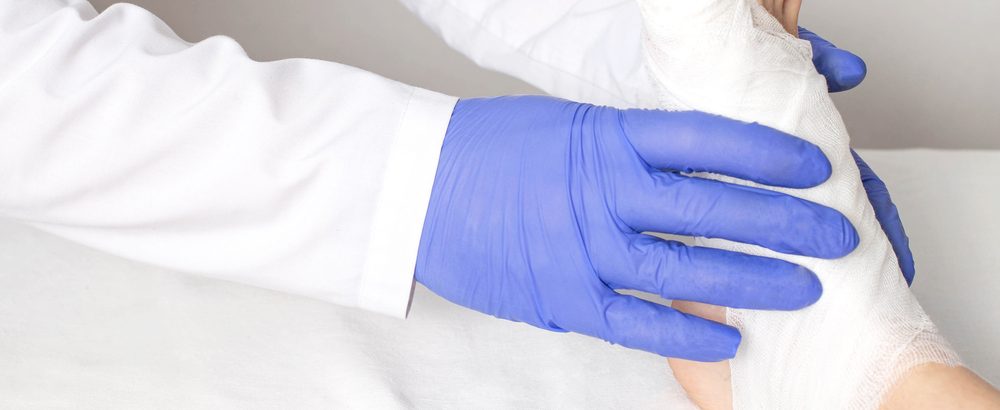Explaining Frostbitten Feet Treatment

Frostbitten Feet? Your Treatment Options
Now that the cold weather has settled in, the risk of frostbite injuries increases exponentially. If you are experiencing frostbitten feet, here are some treatment options that you can pursue with the aid of a podiatrist.
Where Does Frostbite Happen?
Frostbite most commonly occurs in the extremities, including your feet. It can also affect your fingers and face.
Symptoms of Frostbite in Feet
As stated by the Mayo Clinic, these are the common symptoms of frostbite:
Initial Symptoms
As frostbite is a progressive injury, symptoms can change over time. Some of the first symptoms you might notice are cold skin and a prickling feeling in the affected part of your body. If you have been recently exposed to cold temperatures and these feelings persist, you should contact a doctor immediately.
Numbness
Cold temperatures can numb the body. If your foot is frostbitten, it can sustain a feeling of numbness for a prolonged period of time.
Discolored Skin
Depending on the frostbite’s severity and your skin tone, a noticeable discoloration can vary in hue. It can range from any of the following shades:
- Red
- White
- Yellow
- Purple
- Brown
- Ashen
- Blue
If you notice any of these colors on your skin after long-term exposure to extreme cold, be sure to contact a doctor or visit an emergency room immediately for treatment.
Change in Skin Appearance or Texture
The texture of the skin around the frostbitten area can assume a hard or waxy appearance. This indicates that the skin has been altered by the temperatures and could be a warning sign of further frostbite symptoms.
Mechanical Difficulties
Are you noticing a feeling of clumsiness or difficulty maintaining balance? This could be due to the stiffness that frostbite can cause in your joints and muscles.
Blistering
After rewarming your skin, some severe cases of frostbite can produce blistering. While blisters are more commonly associated with heat, this should be taken as a serious warning sign if you have recently warmed back up after being exposed to the cold.
Types of Frostbite
There are four stages of frostbite. From least to most severe, these include no frostbite, frostnip, superficial frostbite, and deep frostbite. Worse varieties of frostbite will progressively affect deeper layers of skin as a result of the condition.
Treatment for Frostbitten Feet
Depending on the severity, treatment options for frostbitten feet can vary. These include:
Rewarming
In more mild cases of frostbite, a simple rewarming of the skin might prove effective. This involves soaking your injured foot in warm water for a period of time.
Medication
Your doctor might prescribe you medication like painkillers, antibiotics, or an anti-clotting treatment to protect your body against further injury and discomfort. The proper course of medication will be determined during examination and diagnosis.
Bandaging
To help your injured foot heal, your doctor might decide to bandage your foot or wrap it in a loose dressing to protect it against further injury. The method of bandaging will change depending on how severe your frostbite is.
Therapy
Depending on your condition, your doctor might recommend a therapeutic treatment to aid in recovery. This often includes treatments like whirlpools or physical therapy if some mobility has been affected by the frostbite.
Surgery
If tissue on the foot has died or decayed past saving, your doctor might insist on surgical intervention. This could include a targeted removal of the dead tissue around the frostbitten area or complete amputation of the foot if not enough of the foot can be salvaged.
How to Prevent Frostbitten Feet
The primary way to prevent frostbite is to protect your extremities from extreme cold temperatures. Some simple ways to do this are:
- Wear comfortable layers of winter-appropriate clothing
- Do not leave any openings around your boot or shoe where water or snow can become trapped
- If your clothes are wet, change immediately into dry ones
- Stay hydrated and avoid alcohol
- Act quickly if you notice any symptoms of frostbite developing
Great Treatment for Frostbitten Feet in Eastern Maryland
As the winter trends downward, it is important to recognize these symptoms of frostbite. If you are noticing these signs on your own feet, contact our team of expert podiatrists today to discuss treatment options. If caught early, more effective treatment and recovery can be made possible.





